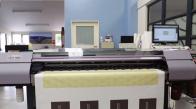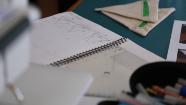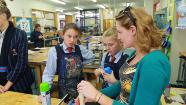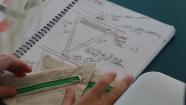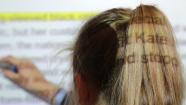Wellington Girls' College connects with Fab Lab at Massey University.
Fab Lab and Wellington Girls' College
Transcript
The Fab Lab was initiated about three and half years ago by one of our academic staff, who is an industrial designer and a service design leader in the field now. He became really interested in the sort of a post-industrial aspect of digital fabrication and about open source software and hardware, and through his research, discovered the Fab Lab network and started to realise that it was going to have some really great implications for the Massey University School of Design, but also to bring it to New Zealand and Australia. We were the first lab in Australasia. We opened two and half years ago and at that stage we were one of 130 labs around the world and now we’re one of 485 labs in the world and there are actually two more in New Zealand and maybe one more starting soon that’s going to be regionally based, which is really exciting.
A Fab Lab has to have a certain range of shared capabilities. That’s why you’re able to be part of the global network that you have a whole lot of digital fabrication resources that are tools for designers and inventors, for creative prototyping, research, and development. So a lot of what happens in the Fab Lab is about people trying out things, chatting with each other, getting inspired by each other, sharing ideas when they get stuck, asking each other what other people have done to fix that to that point of even if we get stuck on a particular idea, we’ll ask people in the global network.
A standard range of capabilities would be you know, some 3D printers, a laser cutter, some scanners, some CNC machines, and some very standard electronics infantry, where people are developing programing and making their own circuit boards to do all sorts of things, whether that’s a flexible circuit board to that’s integrated into a garment, or whether they are doing an interactive sculpture that’s going to be interactive with people approaching and playing with it, they’re making furniture, all sorts of things.
Wellington Girls College approached us, and it was partially because Julie, who’s one of the teachers there, had done her master’s the same time I had done my master's, but also because they are really a creative team, and they were thinking about how to enhance their student experience and become part of the digital changes in the design world. When we got together we thought, oh well this is going to be great. We’ll get the students to start getting a feel for how they might get a really good work flow happening from working on their computer to creating some of their designs. And because there’s a lot of schools in New Zealand that don’t have the financial ability to support a space that has a lot of the digital fabrication technology, it does seem obvious that they might come to a place like this.
So we actually started with a very similar project that’s happening this year just doing the lights and taking Renee, who’s one of the other teachers, through the process of doing a light and she worked with that and worked with how she would integrate that into her curriculum. And then it’s been expanded with fabric and developments as well. We’ve had a number of teachers within the digital and design areas come through and visit Fab Lab Wellington, and I would invite any staff from high schools that are interested in finding out more about how they integrate digital fabrication into their curriculum to contact us, but also to come and visit and see how we might work together.
Related videos
Outsourcing digital fabric printing (04:04)
A year 13 class connects with a fabric printing company to outsource their printing.
Will my design for an organiser work? (02:02)
Two year 8 students describe their functional modelling of their designs for organisers.
Will my design for a mirror work? (04:06)
Year 8 students talk about the functional modelling of their designs for mirrors and how they are fulfilling the brief....
Developing an initial brief for an organiser (01.27)
A year 8 student describes how she went about creating an initial brief for her organiser.
Examples for exploring brief development (00:58)
Two year 8 students describe their ideas about the types of specifications that would have been given for two famous outcomes....

